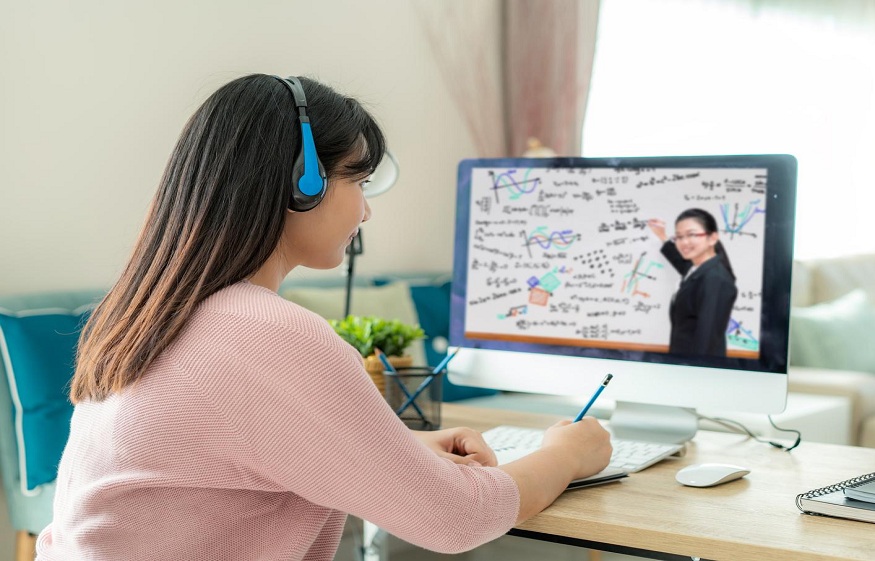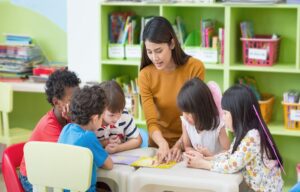
How can we help students learn better?
Here is a frequent situation : during a permanent copy consultation, a student (or a student) comes to see his copy, she had a very bad mark: 2/20. She does not understand, she thought she had succeeded, she has worked well on her course, she knows him. Moreover, in fact, what she wrote in the copy is not false, but that does not answer the question asked or does not comply with expectations. How did this student work during the year? How did she prepare for the exam? Was she confident before the exam?
A certain number of studies (eg Karpicke et al., 2009) show that the revision strategy most frequently used by students is to proofread lessons (84%), often in a massed manner.in time (just before the exam…), then comes the performance of exercises (only 43%). However, proofreading is one of the least effective strategies for long-term learning. Who has not also noticed the desertification of the courses by the students, the difficulties (or even the total absence) of note taking, the attentional difficulties. Students also sometimes show difficulty in selecting relevant information, organizing knowledge (and not just learning a list of isolated items), transferring what they have learned, etc.
So how do you go about learning ? What are the learning strategies that make it possible to learn in a sustainable and effective way ?
Learning strategies can be classified according to their ” depth “. Weinstein & Mayer (1986) distinguish 3 main types of strategies: repetition strategies (reread, copy), which are the most superficial, organizational strategies (structure, make diagrams, concept maps), which are deeper , and development strategies(create analogies, answer questions, reformulate, create mental images), which are even deeper and which encourage the creation of a link between the information to be learned and the previous knowledge in memory. Of course, the more the strategies are deep, elaborative, the more they are costly in effort and the more they are effective on the understanding in the long term. Learning takes effort !
To learn, it is therefore preferable to set up elaborative and generative strategies (“ generative learning ”), that is to say in which the learner is active and builds knowledge. Fiorella & Mayer (2016) propose several strategies that promote this (see another resource on the subject): summarize, build a conceptual network (mapping), draw, imagine, test yourself, explain yourself, teach others put it into action.
In their excellent site ” The Learning Scientists “, Megan Sumeracki and Yana Weinstein present in a clear and playful way how the results of research on learning can be used in education. They offer 6 strategies for effective learning:
Spaced recovery : it is more efficient to distribute your learning over several short periods of time rather than massively all at once.
Training through retrieval (or testing): a great deal of research has shown that trying to retrieve information from memory, without having any support in front of you is much more effective on long-term learning than proofreading of information. It is important to then verify the accuracy of what we have recovered. This strategy has shown many benefits for learning (cf. Roediger et al., 2011).
Elaboration : asking questions, making connections, applying to one’s own experiences or memories, describing and explaining in one’s own words.
Interleaving : alternating study sessions of different subjects (and coming back to them) is more effective than studying one subject completely and then moving on to another.
Use of concrete examples : look for your own examples, think about how the concepts relate to the examples given in class.
Double coding : using visual illustrations and working on the links between texts and images facilitates learning. The work of Mayer (2002) on multimedia learning made it possible to define a certain number of principles allowing the improvement of learning.
But it is not only the strategies implemented to process information ( cognitive strategies ) that count, there is also the way in which students organize their work, self-assess themselves, regulate their learning (the strategies metacognitive). If we are interested in the ways of learning of successful students (McMillan, 2010), we see that in addition to the cognitive strategies of memorization and organization implemented (identification and repetition of the main ideas of a courses, ability to summarize and paraphrase, organization of ideas in a table of contents), other strategies can be identified. These students have a study schedule, they are attentive in class and take summary notes, they write questions to ask the teacher, they are familiar with the requirements and methods of evaluation. Finally, we also note that these students place a high value on academic learning, they think that they are competent to carry out the requested tasks, they persist in the tasks and seek alternative solutions, their goal in learning is mastery of knowledge, which allows them to see assessments not as sanctions but as stages in learning. These last elements refer of course to themotivation .
Encourage the use of effective and adapted cognitive learning strategies .
Support learning planning, lead students to ask themselves questions about their learning: do they feel they have understood the course? what do they think they have learned? Are they sure they have understood correctly? How would they go about improving their understanding? Be explicit about the requirements and what is expected of them: what will they need to know and know-how at the end of the course, how will they be assessed? In short: develop metacognition .
Generate and maintain motivation : be concerned with the value placed on and the interest for students in carrying out the proposed activities (what is it for? Why am I learning this?), Vary the tasks and activities to maintain attention and commitment, offer students choices to allow them to have control over their learning, offer them “achievable” tasks in order to maintain a feeling of competence, give them constructive feedback and give them confidence in their ability to progress.


